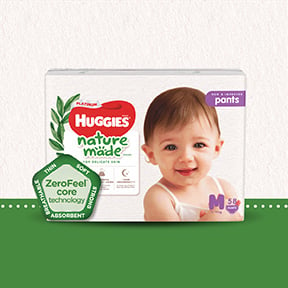Things You Need To Know About Perineal Massage
Massage during pregnancy has gained a lot in popularity within recent years. Originally, it tended to be limited to groups of women who favoured alternative therapies. But now it is seen as a valid and useful means of reducing general pregnancy discomfort. Recently research and evidence have shown a scientific basis for its benefits, though pregnant women seemed to have known this for a very long time.
Who does pregnancy massage?
If you are thinking about having a pregnancy massage, it is important to find a qualified therapist who specializes in the field of ante-natal massage. Ask your midwife or obstetrician who they generally recommend, or look in your local yellow pages for a practitioner. An internet search may also provide some contact details. When you do find a massage therapist, ask them about their qualifications and what training they have had.
Some physiotherapists have a particular interest in obstetric (pregnancy) massage and provide massage services as well.
What does it involve?
One of the most popular forms of pregnancy massage uses the principles based on Swedish massage techniques. This is because of its particular benefits in reducing muscle tension and improving blood flow and lymphatic drainage.
Some massage therapists use aromatherapy oils and burn incense to heighten the sensory experience. There is however, a range of oils which need to be avoided as they can prompt uterine contractions. These include oregano, peppermint, thyme, basil, sage and rosemary. You may prefer the massage therapist uses non-scented or very low scented oils.
How much skin you expose during your massage is entirely up to you. Some women are comfortable wearing very little clothing; others want to feel more covered. It is worth bearing in mind though, for you to get the most benefit from your massage, the therapist needs to be able to access as much of your skin surface area as possible.
What makes pregnancy massage different?
Ante-Natal massage differs from general massage because there can be some risks if particular pressure points are stimulated. These are located within your wrists and ankles and massaging them can stimulate the uterus to start contracting. There also needs to be a level of sensitivity and gentleness extended by the therapist, which factors in the baby as well.
Some expectant couples book a massage therapist to give them both a massage and they find this is a good way of connecting and enhancing their emotional connectedness. You may find that your massage therapist is willing to show your partner some massage techniques you could try for yourselves.
But I can’t even lie down!
Equipment required for pregnancy massage can be a little different to the standard issue. Body position during prenatal massage is important in order to maximise the effectiveness of the massage and to fully gain its benefits. Many health and massage professionals recommend a side-lying position for pregnant women during massage.
Current research supports the use of standard massage tables, rather than those which have a hole cut out in them to accommodate the pregnant belly. “Cut outs” can allow the abdomen to dangle unsupported and cause stretching of the uterine ligaments. However if cut out tables or pillows are used, these should not be utilised for extended periods of time e.g. 10-15 minutes is the maximum recommended timeframe.
NB It may be useful for you to contact your massage therapist before your initial appointment and clarify which position/s you will be placed in during your massage.
Lying on your back is not recommended past the first trimester so your positioning will be restricted to your tummy or your side. The massage therapist should have a range of pillows and foam cut-outs to support your belly and avoid extra muscular strain.
Some therapists offer a mobile massage service and have portable massage tables which fold up into a suitcase size. If, because of the size of your pregnant belly you feel insecure or unstable on the massage table, tell your massage therapist. Between both of you, you can decide on a comfortable and safe alternative as a base to lie on.
Prices vary for pregnancy massage services though a rebate is available through some health insurance funds. This is dependent on the level of ancillary cover.
Benefits of ante-natal massage:
- When done effectively, has been proven to reduce stress hormones within a pregnant woman’s body. It also increases the levels of hormones which tend to be low in women who are depressed.
- It leads to a reduction in anxiety and free floating concerns. There is often an improvement in general mood following a massage.
- Pregnant women often find a massage rejuvenates their energy because it gives them an opportunity to rest and completely relax.
- For some pregnant women, massage can relieve nausea and heartburn. In others, it can make these worse though.
- Relieves the everyday discomforts of pregnancy such as an aching neck, sore back, and heaviness in the pelvic bones, leg cramps, swelling of the ankles and feet and oedema (fluid retention).
- Leads to muscle relaxation and relief of joint pain. Pregnancy massage can be particularly helpful for women who experience sciatic nerve pain.
- Builds a feeling a sense of connectedness with another person as well as building a rapport. Many pregnant women experience a change in their intimate relationship with their partner and suffer from being “touch deprived”.
- Pregnancy massage may improve the progression of labour with better health outcomes for both the mother and her baby. More relaxed mothers tend to have a lower risk of interventions during labour and birth.
- Pregnancy massage can provide an opportunity for women to completely stop what they are doing and focus on the pleasure of having someone else do something just for them.
- Improved sleep due to feeling less muscle tension and generally less uncomfortable.
When to avoid having a pregnancy massage:
- If your midwife or doctor have advised you against it.
- Some massage therapists have a policy of not doing pregnancy massages within the first trimester of a woman’s pregnancy. This is because of the increased risk for miscarriage in the first 12 weeks of gestation.
- If you are in a high risk pregnancy category or have previously had a premature labour.
- If you have Pregnancy Induced Hypertension e.g. high blood pressure.
- If you have pre-eclampsia, or sudden swelling with retention of fluid. If you experience severe headaches.
- If having a pregnancy massage causes you to feel sick, lightheaded, gives you a headache or you don’t enjoy the experience. Don’t feel as if you have to do it just because others feel it’s a good idea. Some women genuinely don’t like being touched and find massages an intrusion of their privacy.
- If you feel the massage therapist is being too vigorous you need to say so. Ask them to be a little gentler and keep the lines of communication open between you both. This is what is termed a therapeutic relationship and it needs to be working for you both in order to gain maximum benefit.
What about when I’m in labour?
Massage can also be used very effectively during labour to relieve back pain and generalized muscle tension. It is a good, practical way, of helping partners feel they are contributing. Not all women like to be massaged when they are in labour though, and find it to be distracting and a major irritation. Some massage therapists or doulas use aromatherapy oils to induce labour. These combined with massage are thought to enhance the progression of labour.
Have more questions on pregnancy? At Huggies, we’re here to guide you at every step of the way. Motherhood represents a completely new phase in your life and a community of new mothers who can journey with you will be helpful! Pregnancy tips, parenting tips, free diaper samples and exclusive diaper offers shared on the Huggies Club platform can ensure you are best prepared for your newborn child too.
"The information contained in this site is for informational purposes only and is not intended to be a substitute for professional medical advice, diagnosis or treatment. Always seek the advice of your doctor or other qualified healthcare provider with any questions you may have regarding a medical condition. You should never delay seeking medical advice, disregard medical advice or discontinue medical treatment because of information on this site. To the extent permitted by law, Kimberly-Clark excludes liability or responsibility for claims, errors or omissions on this site, and may amend material at any time without notice."













